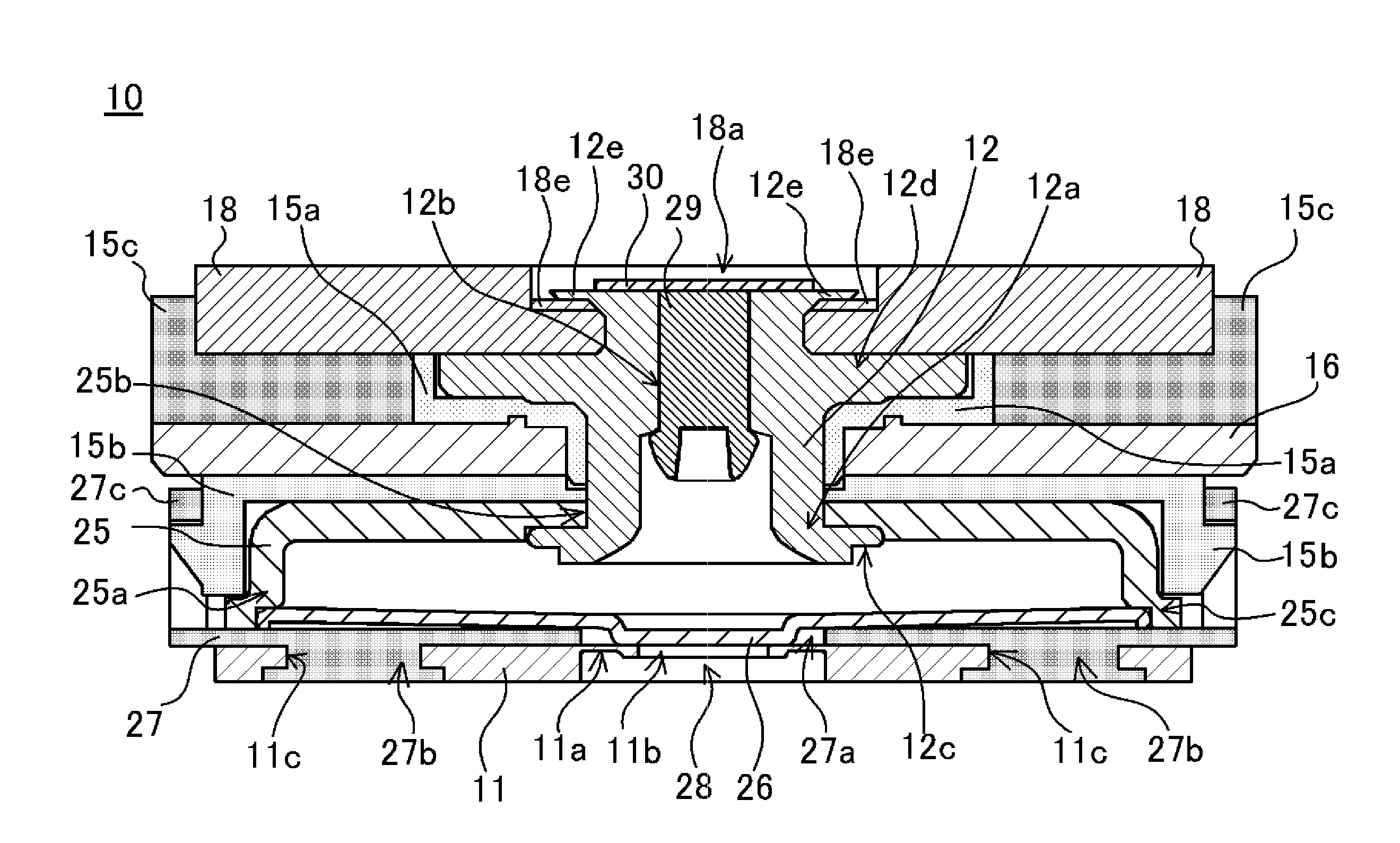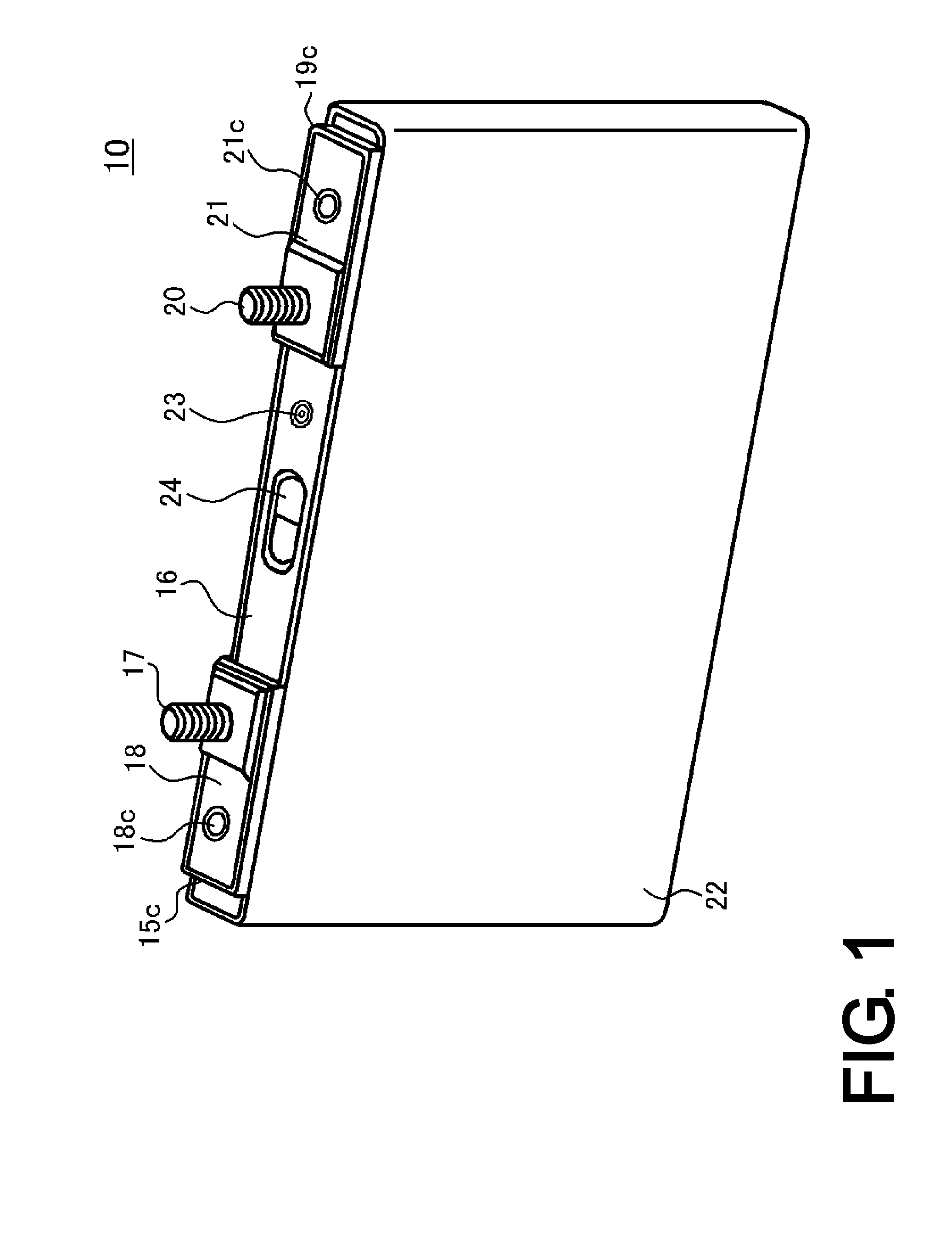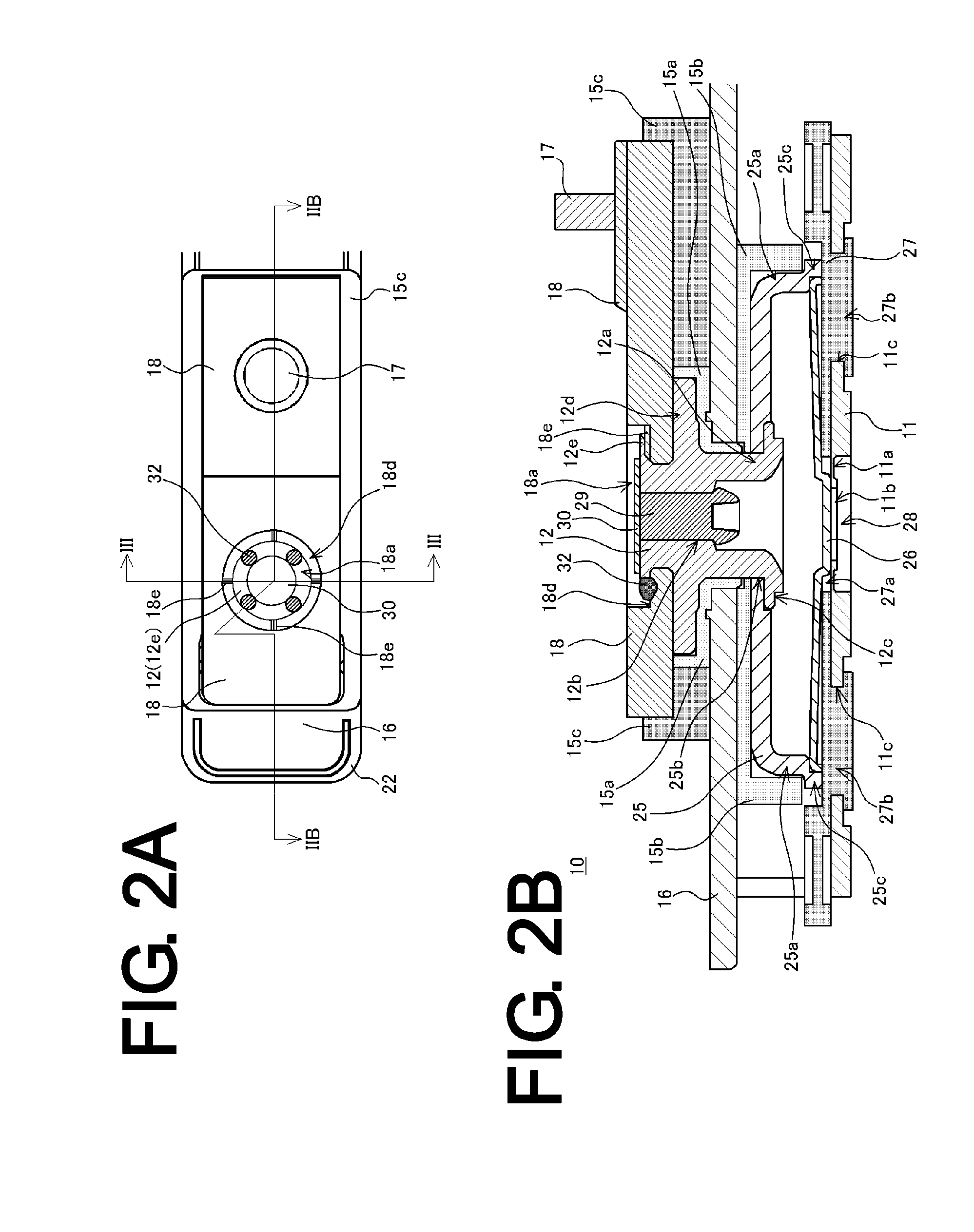Prismatic secondary battery
a secondary battery and prismatic technology, applied in the direction of batteries, sustainable manufacturing/processing, cell components, etc., can solve the problems of reducing the conductivity between the terminal member and the external conduction member, and changing the electric resistance over tim
- Summary
- Abstract
- Description
- Claims
- Application Information
AI Technical Summary
Benefits of technology
Problems solved by technology
Method used
Image
Examples
embodiments
[0030]A configuration of a prismatic nonaqueous electrolyte secondary battery 10 of an embodiment is described with reference to FIGS. 1 to 7. The prismatic nonaqueous electrolyte secondary battery 10 includes a flat winding electrode assembly (not illustrated) in which a positive electrode plate (not illustrated) and a negative electrode plate (not illustrated) are winded with a separator interposed therebetween. The positive electrode plate is manufactured by applying a positive active material mixture to both surfaces of a positive electrode substrate including an aluminum foil, and performing a drying and a rolling, and then performing a slitting operation so that the aluminum foil is exposed in a shape of a belt along a longitudinal direction to an edge. In addition, the negative electrode plate is manufactured by applying a negative active material mixture to both surfaces of a negative electrode substrate including a copper foil, and performing a drying and a rolling, and the...
modified examples 1 to 3
[0074]In the prismatic nonaqueous electrolyte secondary battery 10 of the embodiment, an example, in which the convex portions 18e of the positive electrode external conduction member 18 and the convex portions 21e of the negative electrode external conduction member 21 are extended from the center sides of the small-diameter portions 18c and 21c of the stepped through holes 18a and 21a up to the walls 18j and 21j of the stepped portions, is described. In the invention, the convex portions 18e and 21e cannot be extended from the center sides of the small-diameter portions 18c and 21c of the stepped through holes 18a and 21a up to the walls 18j and 21j of the stepped portions when a rotation between the positive electrode external conduction member 18 and the positive electrode terminal member 12, and a rotation between the negative electrode external conduction member 21 and the negative electrode terminal member 14 may be inhibited.
[0075]Modified Examples of the convex portions 18e...
PUM
 Login to View More
Login to View More Abstract
Description
Claims
Application Information
 Login to View More
Login to View More - R&D
- Intellectual Property
- Life Sciences
- Materials
- Tech Scout
- Unparalleled Data Quality
- Higher Quality Content
- 60% Fewer Hallucinations
Browse by: Latest US Patents, China's latest patents, Technical Efficacy Thesaurus, Application Domain, Technology Topic, Popular Technical Reports.
© 2025 PatSnap. All rights reserved.Legal|Privacy policy|Modern Slavery Act Transparency Statement|Sitemap|About US| Contact US: help@patsnap.com



